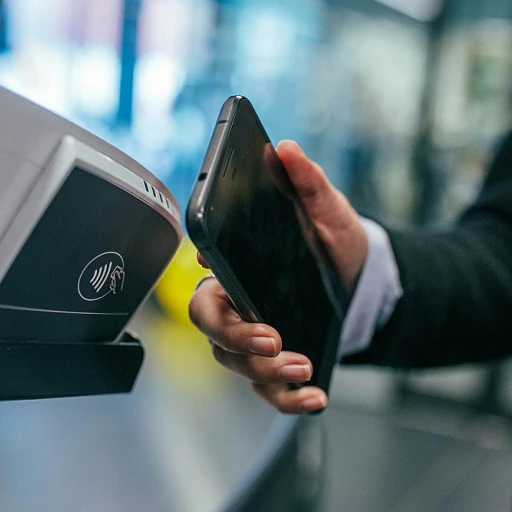
Understanding Aave's Volatility
Understanding Market Behaviors
The volatility of Aave, like many digital assets in the crypto space, presents both opportunities and risks for investors. Understanding this volatility is crucial for proper portfolio construction as it can significantly impact investment returns. Aave's recent historical data highlights the asset's position in the market, revealing trends of both high volatility and periods of low volatility.
Investors seeking higher returns are naturally attracted to the potential that Aave's high volatility offers. However, with higher risk comes the need for effective risk management strategies. Price fluctuations are inevitable in any crypto asset, and Aave is no exception. Yet, these fluctuations also allow for the opportunity to achieve adjusted returns that outweigh the associated risks.
One of the key metrics to consider when assessing risk in the context of volatility crypto is the Sharpe ratio. This ratio helps investors consider the risk adjusted performance by assessing the returns relative to the market conditions. Understanding how this ratio impacts your strategy is essential for long-term success. To explore its application further, you may find valuable insights in a related piece on strategic impact.
In the following sections, we'll delve deeper into both the methodologies for assessing this risk adjusted performance and practical approaches to strategic risk management. We'll examine how to leverage the Sharpe ratio in conjunction with other tools to construct portfolios that can balance return volatility with future returns.
The Role of Sharpe Ratio in Risk Assessment
The Significance of the Sharpe Ratio in Evaluating Risk
The cryptocurrency market, with its dynamic and often unpredictable nature, presents unique challenges to investors. Aave, as a leading digital asset platform, exemplifies this high volatility environment. In the face of such fluctuations, investors seek reliable indicators to assess potential risks and returns. One such crucial measure is the Sharpe Ratio. The Sharpe Ratio provides a quantitative approach to understanding the relationship between risk and returns. It helps in determining the adjusted performance of a crypto asset by comparing its potential returns against the inherent risks. This metric becomes essential when assessing Aave's performance, as it accounts for the portfolio's standard deviation or return volatility. ### Why Investors Consider the Sharpe Ratio Essential- Risk Adjusted Returns: By taking into account both the returns and risks, the Sharpe Ratio offers a more comprehensive view of an asset's performance. Investors can make informed choices, especially in markets notorious for high volatility like crypto.
- Comparative Analysis: The ratio allows investors to compare different assets or portfolios on a level playing field. By adjusting for risk, it helps identify assets that offer higher returns without proportionally higher risk.
- Market Conditions Insight: As market conditions fluctuate, the Sharpe Ratio helps investors understand how these changes impact their portfolios. It serves as a guide to adjusting strategies in response to shifting volatility.
Strategic Risk Management Approaches
Adopting Multilayered Strategies for Risk Management
Strategic risk management in the realm of crypto investments, particularly with high volatility assets like Aave, requires astute approaches. Portfolios with exposure to crypto must address the return volatility while aiming for higher adjusted returns. An investor has to weigh short-term high volatility against long-term investment returns. Considering the potential for higher returns, portfolios might experience varying market conditions that necessitate dynamic adjustment strategies. Implementing strategies aligned with the Sharpe ratio can help stakeholders achieve a better risk-adjusted performance.- Diversification across Assets: A well-constructed portfolio involves spreading risk across different asset classes. This not only buffers against market shifts but also permits a focus on potential high returns from digital assets.
- Tailoring Portfolio to Volatility Levels: Investors should consider the broader market and adjust their portfolios to suit periods of low and high volatility. High volatility often demands a reallocation towards more stable assets.
- Regular Portfolio Rebalancing: Constant evaluation and timely rebalancing can mitigate risk during swift market changes. By realigning the asset mix, investors can maintain an optimum risk-return balance, essential for maintaining consistent investment returns.
- Hedging Strategies: Utilizing derivatives and other risk management tools provides a buffer against unforeseen price swings in the crypto market. These measures help insulate the portfolio from significant losses while positioning it for future gains.
Case Studies: Successful Risk Mitigation
Examining Real-world Instances of Effective Risk Mitigation
In the ever-evolving realm of Aave and similar platforms, the ability to manage risk effectively is critical for investors seeking higher returns while navigating high volatility. The understanding of Sharpe Ratio and risk-adjusted returns, although key, is complemented by practical implementations in the market. Let's look at how some strategies have succeeded in managing volatility in crypto assets.
Leading the charge, some institutional investors have adeptly constructed diversified portfolios that balance between low and high volatility assets. By allocating investments across different risk bands, they mitigate potential losses, achieving a healthier, long-term return profile. The inclusion of a variety of digital assets, guided by the Sharpe Ratio, allows for a robust cushion against abrupt price swings.
Another remarkable strategy observed is the use of derivatives. By incorporating options and futures contracts, investors shield their portfolios against adverse market conditions. This method of hedging effectively locks in prices or returns, offering protection as the market fluctuates.
Additionally, market participants have adopted algorithmic trading models tailored to exploit short-term volatilities while protecting against long-term risks. These models use volatility as an advantage, optimizing returns risk through calculated trading decisions based on real-time data.
Furthermore, constant monitoring via advanced technologies enables investors to make timely decisions. This proactive approach, underpinned by standard deviation and Sharpe Ratio analytics, helps adapt portfolios to maintain adjusted performance aligned with future returns goals.
These practical examples and strategic implementations underscore the importance of adaptive risk management tactics. As the landscape of Aavecontinues to change, staying informed and flexible in approach will be integral for investors to thrive amid fluctuating market conditions.
Tools and Technologies for Monitoring Volatility
Utilizing Technology for Real-time Monitoring
As Aave and the broader crypto markets continue to experience high volatility, investors must be equipped with the right tools and technologies to monitor market conditions. Real-time data feeds are crucial for tracking Aave's price fluctuations and understanding market volatility. These feeds provide investors with critical insights into potential risks and opportunities, allowing them to make informed decisions.Analytical Tools for Risk Assessment
Analytical tools have become indispensable for assessing risk-adjusted performance. These tools help in calculating metrics like the Sharpe Ratio to gauge the risk-return balance of a portfolio in volatile markets. With real-time data, investors can adjust their portfolios effectively, ensuring higher risk premium. Integrating these tools into investment strategies allows for monitoring crypto returns and mitigating future risks.Predictive Analytics for Future Performance
In the realm of digital assets, predictive analytics play a pivotal role in anticipating future returns. By leveraging machine learning models, investors can forecast adjusted returns and better navigate return volatility. These technologies enhance the ability to predict market trends, aiding in the construction of portfolios that can thrive in both low and high volatility environments.Collaborative Platforms for Portfolio Management
Collaborative platforms are an emerging trend that facilitates real-time communication and information sharing among investors. These platforms enable investors to collectively analyze market data and adjust strategies in response to changing conditions. By fostering collaboration, investors can better manage the complexities of investment returns in a high volatility crypto environment.Continuous Advancements in Monitoring Technologies
As technology evolves, new tools will become available for monitoring and managing volatility in markets like Aave. Continuous advancements in technology will provide investors with greater insights and precision in their risk management strategies. Staying updated with these innovations ensures that investors can adapt to future market challenges effectively, optimizing their portfolios for higher returns.Future Trends in Aave Volatility and Risk Management
The Next Phase of Volatility Management
As the landscape of digital assets continues to evolve, understanding the future of volatility management is critical for Aave investors. Market conditions will inevitably shift, bringing with them higher volatility periods that could impact portfolio returns. Investors must be prepared to adapt to these changes to maintain their adjusted performance.
Emerging Technologies and Their Impact
New tools and technologies are emerging to help investors better manage risk and performance in volatile markets. Advanced analytics tools, for example, enable a deeper insight into the price and return volatility of digital assets. Investors can leverage these innovations to refine their portfolio construction strategies, aligning them with market realities.
Long-Term Strategies for Higher Returns
Long-term strategies also play a vital role in navigating Aave's high volatility markets. Crypto investors should consider holding a balanced mix of high and low volatility assets to maximize risk-adjusted returns. Portfolios designed with this in mind will likely offer better resilience against market swings.
Future trends suggest that standard deviation measures alone might not suffice in assessing the risk profile of these assets. Incorporating the Sharpe ratio and other key financial metrics can provide a clearer picture of performance, guiding investment decisions to achieve higher returns without exceeding acceptable risk thresholds.













